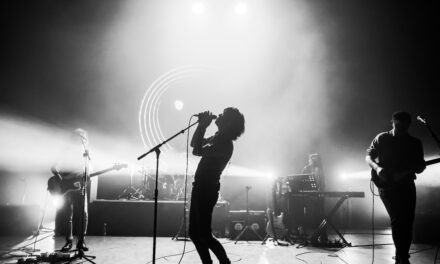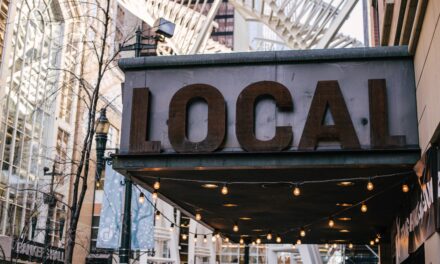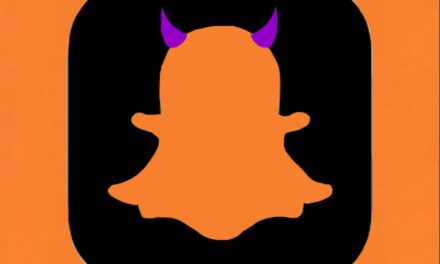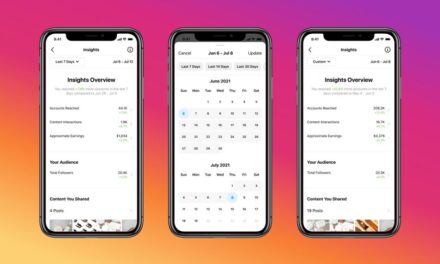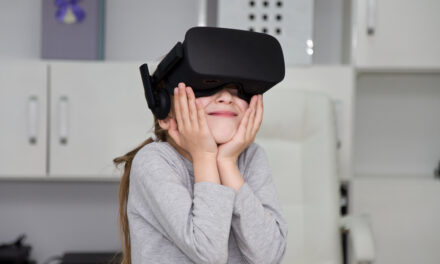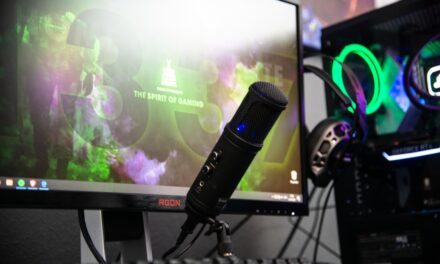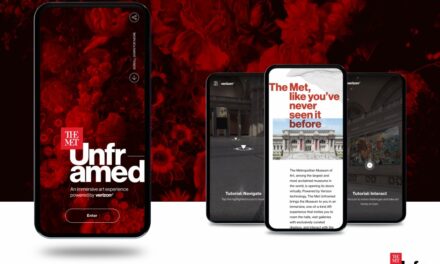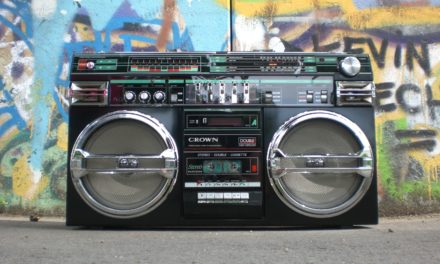Repost from: https://www.marketingdive.com/news/11-marketing-campaigns-that-made-a-splash-in-q2-2018/526702/
While headlines this quarter were loaded with reports around Facebook’s continued mishandling of user data, stricter privacy regulations in the European Union and growing tensions at otherwise celebratory industry events like Cannes Lions, brands took a lighthearted and creative approach to their marketing campaigns.
From flying pizzas cross-country and breaking world records to producing 30,000 videos in 24 hours, there was no shortage of marketing wins — and, of course, some fails — that made a splash and helped shape the course of industry trends in Q2.
Marketing mystique
In a world where the internet seemingly holds all the answers and amateur sleuths take to platforms like Reddit to collectively “crack the case,” it’s hard to imagine how anyone can keep anything hush-hush. Marketers from two global brands in June cleverly spun the “armchair detective” trend into organic buzz by leveraging heavy doses of mystery.
IHOP flips the script
The International House of Pancakes (IHOP) announced on Twitter that it would soon change its name to IHOb. The pancake chain didn’t provide details, and for the next week, people swarmed social media to speculate what the “b” might stand for. Breakfast, bacon, bankruptcy and even bitcoin topped the list of possibilities. Online mentions of IHOP soared 6,477% just one day after the news was teased, according to Brandwatch data shared with Marketing Dive.
IHOP (uh, IHOb), kept up the act and playfully responded to some queries, while telling others to have “batience” for the big reveal. The stunt generated major hype on social and showed no signs of waning even once the company announced that the “b” stands for burgers. The hashtags #IHOP and #IHOB collectively accumulated more than 297 million impressions in the weeklong lead-up to the June 11 reveal, Brandwatch found, pointing to how many people love a good mystery and a chance to share their thoughts online.
While playing up the mystery element was a risky move for the brand, it resulted in a clever and inexpensive way to spin a new line of burgers into a social media craze. However, the move wasn’t dubbed a win by all. John McGarry, chief growth officer at agency Drumroll said the effort came off as more about IHOP and its agency than prioritizing consumers.
“It really left the door open for people to have fun with it in a nasty way. If you are going to do something like that, you need to be ready to respond to Twitter hate with more personality,” McGarry told Marketing Dive. “Also, I’m not sure I would ever go the mystery route when marketing fast food.”
Amazon’s oversized delivery
In a stunt that similarly boasted an air of mystique — but took up far more square footage — Amazon delivered its largest-ever package to drum up excitement for the movie “Jurassic Park: Fallen Kingdom.”
The 40-foot long box was adorned with air holes, the “Jurassic World” logo and a scannable SmileCode that unlocked content surrounding the film, which premiered on June 22. The massive package also featured the hashtag #AmazonFindsAWay to direct curious onlookers to social media and investigate what could be inside the box and buy tickets for the movie. For those that couldn’t wait to crack the case of the box’s contents, an Alexa-powered voice experience offered clues and dinosaur sounds when prompted with “Alexa, ask Jurassic Park what’s in the box.”
Though Amazon’s stunt was presumably pricier than IHOP’s, marketers from both companies saw an opportunity to spark brand buzz online with mystery-laden strategies. Unique tactics like these are what many marketers hope to score with as they experiment with fresh, creative ways to surprise consumers and amplify word-of-mouth potential beyond content that’s often consumed passively on traditional formats.
Cashing in on crowds
Several marketers this spring cleverly jumped on the chance to maximize large crowds of consumers already assembled for separate events.
LG’s laundry pop-up at Bonnaroo
LG Electronics held a laundry-and-lounge activation at Bonnaroo Music & Arts Festival in June, where concertgoers could drop off dirty clothes for a free “wash’n’fold experience.” The 3,600-square-foot pop-up boasted 25 washing machines, 25 dryers and an LG steamer alongside mobile phone charging stations, games, TVs and hangout spots for people to relax during the festival.
The activation was likely a welcome respite for visitors of Bonnaroo, which takes place on rural festival grounds in Tennessee where laundry services and air conditioning are scarce. Aside from enticing people with free laundry services, LG’s out-of-home effort was a clever way for the brand to interact with consumers and take advantage of the large crowds that flock to the annual music festival. In 2017, more than 65,000 people attended the event, The Tennessean reported.
Adidas’ Boston Marathon video run
Athletic apparel brand Adidas leveraged the 30,000 runners of the Boston Marathon in April by creating personalized videos for each participant. High-tech chips attached to race bibs, street mats that transmitted radio signals, along with a 20-person camera crew, helped to capture footage of each runner at the 15K mark and finish line. Hours after the marathon, runners were emailed their video, complete with a soundtrack and b-roll scenes from the race.
The lofty initiative demonstrates how marketers are getting ambitious with video efforts and personalized content at scale, while also capitalizing on popular events that draw major viewership. According to Adweek, the videos collectively scored 100,000 views in the first two days following the race, pointing to how brands can quickly win significant buzz by making the most from crowds already engaged at a major event.
“We are going to start seeing more of these kinds of ideas that promote the brands while creating real, tangible value for consumers,” Drumroll’s McGarry said. “[LG and Adidas] are both excellent examples of doing meaningful things for large crowds of people or what I like to call ‘thank you-worthy’ experiences.”
Marketers go to extreme lengths
Last quarter saw no shortage of brands going the extra mile, in some cases literally, to stand out.
JetBlue’s ‘cheesy’ strategy soars
In May, JetBlue delivered pizzas nearly 2,500 miles from New York to Los Angeles to promote its new cross-country flight routes. While JetBlue’s “Pie in the Sky” stunt wasn’t really about tasty pizza, the campaign likely saw shareability thanks to a celebrity tie-in with director Spike Lee. The airline probably didn’t profit from transporting the $15 pies, though it was successful in demonstrating that traveling from coast to coast isn’t too far with JetBlue.
“JetBlue flying pizzas from NYC to LA is just the ultimate campaign. It’s got the consumer truth, which is that NYC expats in California miss their NYC pizza,” Dan Asulin, associate creative director of agency Barker, told Marketing Dive. “It’s got the stuntish, silly, digital news-type element. And it’s got the product element — fast and convenient travel — baked right in without having to hit you on the head with it.”
Arby’s record-breaking announcement
In announcing its switch to Coca-Cola products at restaurants nationwide, Arby’s broke two Guinness World records for the world’s largest and smallest ads. The largest ad covers 212,000 square feet of Nebraskan farmland and reads “Arby’s Now has Coke,” while the smallest ad was carved onto a sesame seed from an Arby’s bun.
Loyal fans of the chain aired their disdain on social media following the company’s initial announcement to switch from Pepsi products to Coke in 2017. In response, Arby’s served up grandiose attempts to win over remaining naysayers. While the record-breaking ads aimed to share the news with Americans, Arby’s CMO Jim Taylor said they were just as much about, “communicating this simple message in a unique and buzzworthy way.”
Domino’s paves the way for pizza
Domino’s announced it would fill in where government fell short by fixing potholes in roads for the sake of maintaining the integrity of its pizzas during the delivery process. The “Paving for Pizza” program aimed to give customers peace of mind about the wellbeing of their precious pies in the face of damaged roads, while also driving social media chatter, as users on Twitter applauded a company for doing what they thought to be municipalities’ job.
However, the pizza chain may have laid it on a bit thick for some. “Domino’s paving of the potholes is a fun attempt at doing something that’s worthy of a ‘thank you’ but it comes off as more stunty than anything creating real value,” Drumroll’s McGarry said.
When sports go mobile
Nike’s AR sneaker drop scores
Nike is shaping up to be a social commerce success story after a hit promotion on Facebook Messenger in May. The athletic apparel retailer beta-tested Messenger’s augmented reality (AR) feature that gives people a closer look at products. To view the featured sneaker, users sent a series of emojis to a dedicated chatbot on Messenger, where they then unlocked the “Kyrie 4 red carpet” AR experience that showcased the sneaker. Once they examined the shoe and left the experience, they could make a purchase.
While the run was a sales win for Nike (it sold out of the featured sneaker in less than an hour), it was also an innovative slam dunk that points to how brands can leverage fresh mobile tech like chatbots and AR experiences to engage ad-fatigued consumers and flex some creative marketing muscle.
While Nike has had more luck with social commerce than most brands, ESPN’s mobile effort proves that it’s not always about selling a product. During the NBA Finals in June, marketing teams from ESPN and agency R/GA sent personalized messages to iPhone users in New York City to ask them why they weren’t tuned in to the basketball championship. For example, someone sitting on a park bench might have received a message via AirDrop, the feature that links with nearby Apple devices to share content, that said, “Enjoying a rest on the bench? LeBron isn’t,” referring to Cleveland Cavaliers’ LeBron James.
The stunt aimed to promote ESPN’s coverage of the NBA Finals, though it likely didn’t result in many additional viewers, as AirDrop’s limited reach of about 30 feet mired scaling to a larger audience. While trolling folks with personalized messages skirts the line between clever and creepy, the unorthodox move demonstrates how sports marketers and brands in general can surprise consumers and boost awareness with a crafty mobile strategy.
Tone-deaf misfires
For nearly every marketing win, there’s at least one tale of a brand’s backfired attempt at connecting with consumers in some way.
Handmaid’s Tale lingerie sparks outrage
In April, sleepwear brand Lunya faced resoundingly negative response from social media users after it ran a promotion for lingerie that played on the hit Hulu drama “The Handmaid’s Tale” ahead of the show’s season two premiere. Lunya attempted to ride on the coattails on the show’s popularity, calling its silk pajams “Offred” — a pun on the name of the show’s main character — and even including other references, such as encouraging Instagram fans to “join the resistance,” as the characters fight back against an oppressive patriarchal society.
“The Handmaid’s Tale” touches on serious themes of women’s identity in a world where they’re subjugated as the property and sexual slaves of powerful families. While clever wordplay is often used in marketing, Lunya’s blunder highlights the importance of authenticity and ensuring that marketing messages or tie-ins are in tune with the brand’s values and the actual products being sold.
Burger King Russia goes wrong with pregnancy ad
Another brand was pushed to apologize this spring after running a social media campaign offering a lifetime supply of burgers and about $47,000 to women who could prove they were impregnated by players on the Russian World Cup team. Burger King aimed to increase the athletic genes in the nation and “ensure the success of the Russian team for generations to come,” though the promotion was cut short after sparking heavy criticism from the public online.
Burger King was smart to align itself with the World Cup, as it’s one of the most highly watched events around the globe, though its Russian arm fouled by making light of sexist stereotypes and inching too close to eugenics. The Russian branch of the fast-food giant quickly apologized on VKontakte, Russia’s equivalent of Facebook, though the insensitive promotion points to the dangers of marketers coming across as tone-deaf after playing up stereotypes or trivializing social issues.


